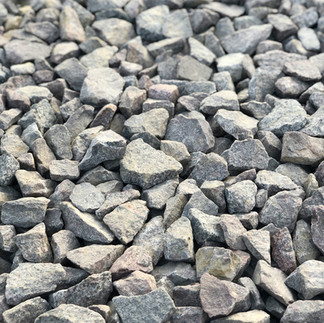Why Your Patio Might Sink (and How to Avoid It)
- Ariel Hitchon
- Jul 7
- 2 min read

Pro Tip: It’s All in the Base.
If you’ve ever walked across a patio and noticed uneven surfaces, pooling water, or stones that rock beneath your feet — it’s not just wear and tear. It’s a sinking patio. And here’s the truth: it doesn’t take decades for it to happen. Sometimes, all it takes is one bad base.
Let’s break down why it happens, and what we do differently.
The Base: Your Patio’s Foundation
Think of the base like the bones of your patio. No matter how beautiful the pavers are, if what’s underneath them isn’t right, they won’t last.
A typical hardscape base includes:
Excavation of organic material (this is the first critical step many people skip or skimp on)
Compacted layers of crushed stone or gravel
A layer of bedding material
Then your pavers, polymeric sand, and edging to lock it all in
Done properly, this base allows for drainage, prevents shifting, and supports the weight of furniture, foot traffic, and even vehicles if designed for it. Done poorly… it sinks, shifts, or turns into a weed-filled swamp.
Why Patios Sink: 4 Common Causes
1. Inadequate Excavation:
One of the biggest culprits. If the area wasn’t dug deep enough, or if topsoil and organic matter were left behind, the ground will settle unevenly over time — especially after a winter or heavy rainfall.
2. Poor Drainage:
If water has nowhere to go, it will soften the base material, cause erosion, or even create frost heave in colder months.
3. Skipping Compaction:
Each layer of your base material needs to be compacted — not just dumped and spread. Uncompacted materials shift and settle under pressure.
4. Incorrect Materials:
Not all gravel is created equal. A proper base needs angular, well-graded aggregate that interlocks. Using round stone or sand alone won’t cut it.
How We Prevent It at Nova Peak
We’ve built patios across Nova Scotia’s diverse terrain — from dense clay to sandy soils and everything in between. Here's what sets us apart:
Site-Specific Base Depths: We don’t use a one-size-fits-all depth. We assess soil type, usage, and drainage needs to build a base that’s right for your yard.
Industry-Leading Equipment: Our compactors and grading tools ensure every layer is locked tight before we move to the next.
Drainage Plans, Always: We grade your base to direct water away from the patio and your foundation. In some cases, we’ll install French drains or perforated pipe systems too.
Quality Aggregates Only: No round stone. No "more affordable" materials. No shortcuts. Just solid, compactable, angular material with proper geotextile separation when needed.
Bottom Line
If your patio is sinking — or if you're planning to build one and want to avoid the headache — remember this: the beauty of your hardscape is only as good as the base beneath it.
Questions about your existing patio or planning a new one? We’re happy to take a look and make sure it’s built to last.









Comments